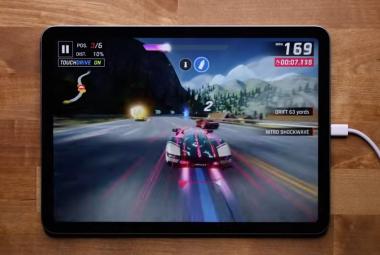Visual excerpt from the YouTube channel Max Tech. All rights belong to the original creator.
In the competitive landscape of consumer electronics, Apple’s strategic approach to product design has consistently kept its devices at the forefront of consumer preference. The iPad 10 exemplifies this strength, overcoming initial criticism and proving its long-term appeal in the tablet market. This in-depth review explores the evolution, strengths, and limitations of the iPad 10, shedding light on why it has managed to maintain a strong position against both competitors and other Apple products.
Redesign and Pricing
The iPad 10 marks a pivotal moment in Apple's budget-friendly tablet line, debuting as the first entry-level iPad to undergo a true redesign. While Apple updated both the external appearance and some internal components, the device still retains its entry-level pricing. Despite critiques that the changes may not justify the cost increase for some users, the iPad 10 has proven to be a commercial success. Notably, it ranks second on Amazon's tablet sales chart—outperforming not only budget models like Amazon Fire tablets but also more premium offerings such as the iPad Air 5, iPad Mini, and iPad Pro.
Battery Life and Performance
One of the standout features of the iPad 10 is its impressive battery life. Powered by the A14 Bionic chip—also found in the iPad Air 4—Apple has underclocked the processor in this model to reduce power consumption. This intentional modification enables prolonged battery life and excellent standby performance, making the device well-suited for multitasking and casual use. Comparative tests reveal that the iPad 10’s battery life outpaces many other tablets in its class, making it a reliable choice for everyday use, especially for streaming and productivity apps.
Camera Layout and User Experience
The horizontal front camera placement on the iPad 10 sets it apart from other Apple tablets. This design choice significantly enhances the user experience, particularly when the device is paired with a keyboard or stand. It offers a more natural camera angle for video calls and presentations, aligning better with the device’s orientation during such use cases. Users have praised the improved video quality and convenience, especially for remote work and conferencing.
Compromises and Criticisms
Despite its many strengths, the iPad 10 is not without compromises. The horizontal camera layout, for example, resulted in the removal of support for the second-generation Apple Pencil—a popular accessory among iPad users due to its magnetic charging and seamless integration. Instead, the iPad 10 only supports the first-generation Apple Pencil, which requires a separate adapter to charge, making it less convenient.
Another point of criticism is the optional detachable keyboard accessory, which retails at $250 but lacks backlighting—a feature expected at that price point. For users who frequently type in low-light environments, this omission may be a dealbreaker. While the keyboard is well-built and functional, its value proposition has been questioned, especially given the iPad 10’s positioning as a budget-friendly device.
Competitive Alternatives Within Apple’s Lineup
Interestingly, Apple’s own product lineup provides formidable competition to the iPad 10. The iPad Air 4, for instance, features the same A14 chip and is available for a slightly higher price on the renewed market—yet it offers notable advantages. It boasts superior performance, enhanced speakers, a laminated display that reduces screen reflectivity, and support for the Apple Pencil 2 with magnetic charging. These features make it an attractive option for users willing to pay a bit more for an elevated experience. While the iPad 10 has its merits—particularly for budget-conscious buyers—the iPad Air 4 showcases Apple’s ability to deliver strong value and versatility within a similar price range.
Design Limitations and User Frustrations
In its effort to stand out, the iPad 10 features a USB-C port and a redesigned body with flat edges reminiscent of the iPad Air and iPad Pro. However, the thicker build and non-laminated display have led to user frustrations. The screen, though serviceable, suffers from increased reflectivity, which hampers visibility in bright environments. Additionally, the device’s charging speed falls short of expectations for those accustomed to the faster USB-C charging capabilities of other Apple devices.
The new flat-edged design, while visually modern, is not perfectly compatible with the Magic Keyboard. Slight misalignments due to magnet placement create a less seamless fit, which has not gone unnoticed by enthusiasts who prioritize accessory integration. These issues underscore the compromises Apple made to keep the iPad 10 distinct as an entry-level product, while still borrowing design elements from its higher-end siblings.
Consumer Reception and Market Position
Despite its drawbacks, the iPad 10 has carved out a strong position in the tablet market—particularly among users seeking an affordable entry point into the Apple ecosystem. Its popularity illustrates a broader trend: consumers continue to value a blend of brand familiarity, core functionality, and aesthetic appeal. Many users seem willing to overlook the device’s shortcomings, attracted by the seamless integration with Apple services and its polished design.
However, the success of the iPad 10 also raises important questions about the future of budget-friendly tablets. As consumers become more discerning about the balance between cost and features, Apple’s strategy of product segmentation may face growing scrutiny. The iPad 10 ultimately serves as a case study in how Apple navigates product differentiation—sometimes by introducing limitations that gently nudge users toward higher-tier options within its own ecosystem.



















